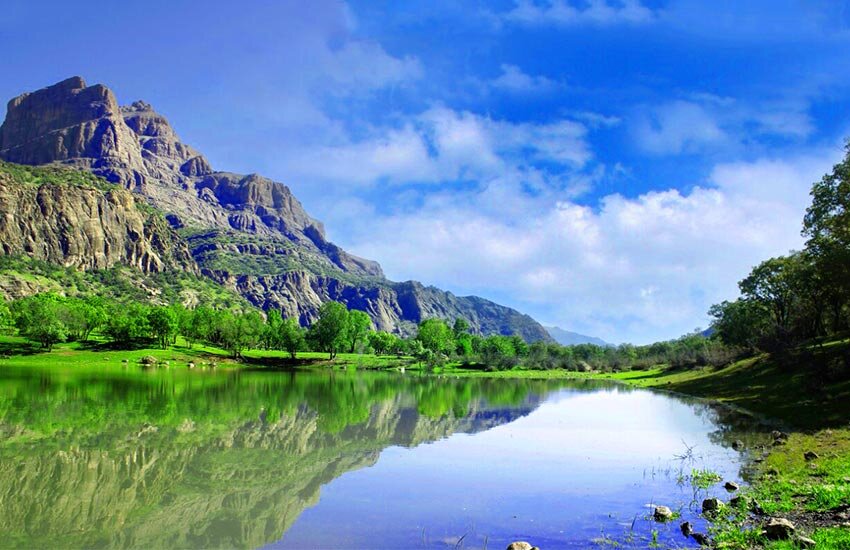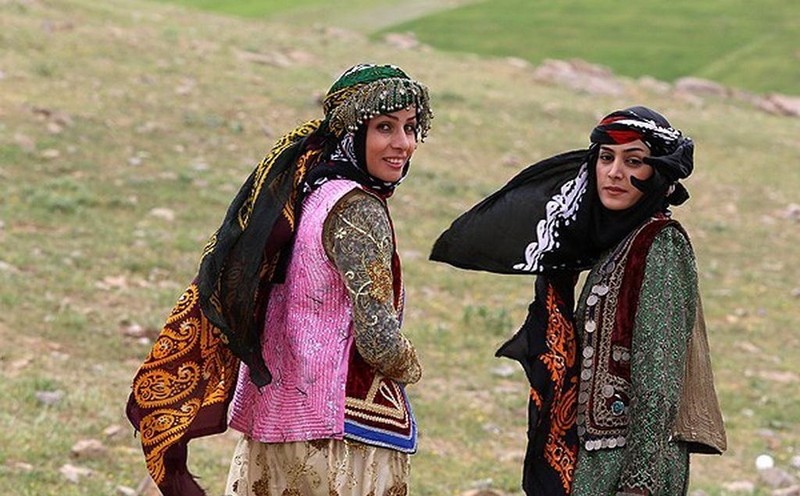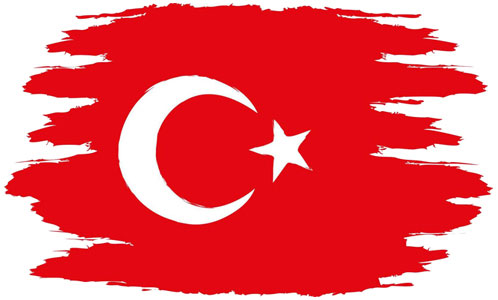Introduction
Iran is a land of geographical and cultural diversity, situated in the Middle East. It is known for its rich history, civilization, and culture that have evolved over thousands of years. Among the many provinces in Iran, Lorestan province stands out, with its unique cultural identity, distinct traditions, and breathtaking natural beauty. Lorestan province is located in western Iran, with its capital city, Khorramabad, serving as its administrative center. In this essay, we will explore the cultural, literary, artistic, social, economic, geographical, and historical significance of Lorestan province, specifically Khorramabad city. We will also examine how these aspects contribute to Iran's overall civilization and contemporary progress towards sustainable development.
Cultural Significance
The culture of Lorestan province is a blend of ancient and modern traditions that have developed over time. The local population still practices age-old customs and celebrates several festivals and events throughout the year. The people of Lorestan province are mostly Kurdish and Lurish, with Persian also spoken. The Kurdish population of Lorestan can be traced back to centuries ago
when the region was under the control of the Kurdish Parthian dynasty.
The province is known for its handwoven carpets, which are a prominent feature of its cultural heritage. The city of Khorramabad is also known for its Qashqai rugs, which are produced by tribal communities living in the area. These carpets are made from high-quality wool and use stunning natural dyes to create a unique color palette. Apart from their cultural
value, these rugs are also exported worldwide, generating income for the local economy.
Another significant aspect of the culture of Lorestan province is its dance traditions. The people of Lorestan love to dance, and their traditional dances include Sarpuli, Chub Bazi, and Kohi. Most of these dances are performed during weddings and other social events and are accompanied by local musical instruments such as the Daf (a type of drum), Kamancheh (a string instrument), and Ney (a type of flute). These dance traditions have been passed down from generation to generation, and they still hold great value in the province.
Literary Significance
Lorestan province has a rich literary heritage, with several poets and writers hailing from the region. The poetry often centers around themes of love and
nature, and he has been widely celebrated for his elegant use of language. The poems are famous for their mystical and spiritual themes and have been cited by many renowned Persian poets over the centuries.
Artistic Significance
Lorestan province is home to many talented artists, who have contributed immensely to the artistic landscape of Iran. The province is known for its excellent metalworking, with copper being the most common
material used. The local artisans use traditional techniques to create intricate designs on copper plates, which are often used as decorative pieces in homes and public places. The copperware produced in Lorestan is of such high quality that it has earned its place as one of Iran's national handicrafts.
Another artistic area where Lorestan province has made a name for itself is pottery. The local potters use traditional techniques to create stunning pottery pieces that range from functional items like bowls and plates to purely ornamental pieces. The pottery produced in Lorestan is known for its vibrant colors and intricate designs and has earned its place as one of Iran's national handicrafts.

The economy of Lorestan province is mainly based on agriculture and handicrafts
Social Significance
The social fabric of Lorestan province is deeply rooted in its traditions and customs. The people of Lorestan are known for their hospitality and their willingness to help others. As a result, visitors to the province are often struck by the warmth and kindness of the locals. Another hallmark of the social life in Lorestan is its sense of community and togetherness. The people of the province often come together to celebrate festivals and events, which further strengthens their social bonds.
Economic Significance
The economy of Lorestan province is mainly based on
agriculture and handicrafts. The province is known for its fertile soil, which supports the cultivation of crops such as wheat, barley, and rice. The province is also home to many fruit orchards where apples, pears, and plums are grown.
Apart from agriculture, handicrafts are another significant contributor to the economy of the province. The province is home to several guilds of artisans who produce high-quality metalwork, pottery, and carpets.
These handicrafts are not only an important source of income for the locals but also contribute significantly to Iran's exports.
Geographical Significance
Lorestan province is located in western Iran and covers an area of approximately 28,293 square kilometers. The province is home to diverse geographical features, including forests, mountains, and rivers. The Zagros mountain range, which runs through the province, is rich in mineral resources like iron ore, copper, and lead. As a result, mining is another significant contributor to the economy of the province.
The region is known for its
beautiful natural scenery, with the Oshtoran-Kuh mountain range being a prominent feature. The mountain range is known for its glaciers, beautiful valleys, and stunning waterfalls. Other famous attractions in the province include the Bisheh waterfall, which is Iran's highest waterfall, and the Falak-ol-Aflak castle, which is a famous historical monument.
Historical Significance
Lorestan province has a rich and storied history, dating back to ancient times. The region was once a part of the Elamite and Parthian empires and has been home to many important political figures and military commanders throughout history. Khorramabad, the capital city of Lorestan, was once an important center of the Sassanid Empire in the 6th century.
The province is also known for its
ancient ruins and historical monuments. The Falak-ol-Aflak castle, which is located in Khorramabad, is one of the most famous historical monuments in the province. The castle dates back to the Sassanid era and was used as a military fortress until the 19th century.

Lorestan province's unique features and traditions
Importance and Role in Today
Lorestan province's cultural, literary, artistic, social, economic, geographical, and historical significance holds great importance in today's world. By understanding the unique features and traditions of this region, we can gain a deeper appreciation for Iran's rich cultural heritage. The handicrafts produced in the province are not only beautiful but also play an important role in generating income
for the local economy and boosting Iran's exports.
The natural resources of the province, including its fertile soil and mineral resources, contribute significantly to Iran's overall economy. The province's stunning natural scenery is also a valuable asset in attracting tourists from all over the world, which, in turn, contributes to Iran's overall economic development.
The region's rich history and ancient ruins are a testament to Iran's contribution to human civilization. By studying and preserving these historical landmarks, we can gain a deeper understanding of our past and our cultural roots. The people of Lorestan are also known for their hospitality and warmth, which serves as an essential aspect of Iran's cultural identity.
Competitive Advantages in Iran's Contemporary Progress towards Sustainable Development
Lorestan province's unique features and traditions provide it with several competitive advantages in Iran's contemporary
progress towards sustainable development. By promoting the handicrafts produced in the region, the province can contribute to sustainable economic development. The local population can be trained in modern techniques of production to further improve the quality and quantity of their products, thus increasing the province's export potential.
The province's geographical features, including its mountain ranges and rivers, can be harnessed to promote sustainable tourism. Eco-tourism initiatives can be implemented to ensure that tourism activities do not harm the environment and to promote sustainable and responsible tourism practices.
Conclusion
Lorestan province, specifically Khorramabad city, holds a unique position in Iran's cultural, literary, artistic, social, economic, geographical, and historical landscape. The region's rich history and
traditions have contributed significantly to Iran's overall civilization. By understanding the unique features and traditions of this region, we can gain a deeper appreciation for Iran's rich cultural heritage and contribute to the country's overall economic development and sustainable progress.
Dear Visitor; Please take a look at the list of 50 most visited websites in the world wide web: YouTube, Facebook, google, translate, gmail, weather, amazon, Instagram, cricbuzz, Hotmail, wordle, satta king, twitter, yahoo, yandex, sarkari result, Netflix, google maps, yahoo mail, roblox, whatsapp, NBA, BBC news, outlook, pinterest, flipkart, eBay, omegle, live score, tiktok, canva, ipl, premier league, hava durumu, ibomma, walmart, twitch, ikea, shein, linkedin, home depot, e devlet, lottery, snaptik, cricket, serie a, nfl, spotify, fox news, amazon prime; There is no book publishing related or project management website in this list. We are working hard to bring these important issues to the center of concentration of societies. Please introduce us via social media, share our website with others and help us to make our world a better place to live. Best Regards.













Write your review